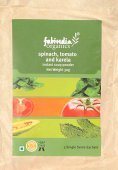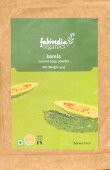Soup: 3 definitions
Introduction:
Soup means something in Hinduism, Sanskrit. If you want to know the exact meaning, history, etymology or English translation of this term then check out the descriptions on this page. Add your comment or reference to a book if you want to contribute to this summary article.
In Hinduism
Ayurveda (science of life)
Veterinary Medicine (The study and treatment of Animals)
Source: Asian Agri-History: Paśu Āyurvēda (Veterinary Medicine) in GaruḍapurāṇaSoup (in Sanskrit: rasa) or Gravy is part of the diet in the treatment of horses, according to sections on the treatment of Horses (Gajāyurveda or Aśvāyurveda) in the Garuḍapurāṇa.—The diet also plays a role during the treatment because the food imparts a greater strength and vigour to the horses and acts as a general prophylactic against diseases. The following diets are mentioned for the horses in Garuḍapurāṇa, which are according to the doṣa: [...] The diet in kaphaja-vikāra: In diseases of the deranged kapha, mudga (green gram) or kulattha (horse gram) rasa (soup/ gravy) mixed with kaṭu, tikta (pungent, bitter drugs), should be given to horses. [...]

Āyurveda (आयुर्वेद, ayurveda) is a branch of Indian science dealing with medicine, herbalism, taxology, anatomy, surgery, alchemy and related topics. Traditional practice of Āyurveda in ancient India dates back to at least the first millenium BC. Literature is commonly written in Sanskrit using various poetic metres.
Purana and Itihasa (epic history)
Source: Shodhganga: Elements of Art and Architecture in the Trtiyakhanda of the VisnudharmottarapuranaSoup (in Sanskrit Yūṣa) were tradtionally used in the art of cooking, as part of the “sixty four kinds of Art”, according to the Kamasutra of Vatsyayana.—Cf. the Sanskrit Vicitraśākayūṣabhakṣyavikārakriyā.—Indian tradition, basically includes sixty four Art forms are acknowledged. The history of Indian Art covers approximately five thousand years which presents a rich and almost continuous record. The references of sixty four kinds of Kala (कला, kalā) are found in the Bhagavatapurana, Shaiva-Tantras, Kamasutra of Vatsyayana etc.

The Purana (पुराण, purāṇas) refers to Sanskrit literature preserving ancient India’s vast cultural history, including historical legends, religious ceremonies, various arts and sciences. The eighteen mahapuranas total over 400,000 shlokas (metrical couplets) and date to at least several centuries BCE.
Languages of India and abroad
Nepali dictionary
Source: unoes: Nepali-English DictionarySoup is another spelling for सुप [supa].—n. soup;
Nepali is the primary language of the Nepalese people counting almost 20 million native speakers. The country of Nepal is situated in the Himalaya mountain range to the north of India.
See also (Relevant definitions)
Starts with: Soup mint, Soupkaar.
Query error!
Full-text (+168): Yusa, Supa, Jushkaka, Mamsarasa, Jhol, Nishkvatha, Mashasupa, Jhola, Tapahara, Jusha, Rasaka, Mudga, Suda, Soup mint, Yu, Tamgaro, Rasa, Tangaaro, Madise-soup, Supya.
Relevant text
Search found 93 books and stories containing Soup; (plurals include: Soups). You can also click to the full overview containing English textual excerpts. Below are direct links for the most relevant articles:
International Ayurvedic Medical Journal
An insight into therapeutical benefits of mudga– a potential lifestyle interventional dietary component w.s.r to charakasamhita < [2017, Issue IX, September]
Meat consumption from an ayurveda perspective < [2020, Issue 4, April]
Samsarjana krama: exploration of ayurvedic concepts on modern parameters < [2020, Issue 11, November]
World Journal of Pharmaceutical Research
Bacteria linked to "egusi" (melon seed) soup spoilage: Isolation and study < [2013: Volume 2, July issue 4]
Hypocholesterolemic perspectives of garlic soup containing bioactive ingredients < [2014: Volume 3, September supplementary issue 7]
A review on the recent flavouring herbal medicines of today < [2023: Volume 12, January issue 1]
Charaka Samhita (English translation) (by Shree Gulabkunverba Ayurvedic Society)
Chapter 20 - The therapeutics of Vomiting (chardi-cikitsa) < [Cikitsasthana (Cikitsa Sthana) — Section on Therapeutics]
Chapter 19 - The therapeutics of Diarrhea (atisara-cikitsa) < [Cikitsasthana (Cikitsa Sthana) — Section on Therapeutics]
Chapter 27k - The group of Cooked foods (Kritanna) < [Sutrasthana (Sutra Sthana) — General Principles]
Kathasaritsagara (cultural study) (by S. W. Chitale)
The Art of ancient Indian Cooking < [Chapter 4 - Social Conditions]
Manufacture and Industries < [Chapter 3 - Economic Conditions]
The Palace and Personal Staff < [Chapter 2 - Political conditions]
Sushruta Samhita, Volume 6: Uttara-tantra (by Kaviraj Kunja Lal Bhishagratna)
Chapter LI - Symptoms and Treatment of Asthma (Shvasa) < [Canto III - Kaya-chikitsa-tantra (internal medicine)]
Chapter XL - Symptoms and treatment of Diarrhea (Atisara) < [Canto III - Kaya-chikitsa-tantra (internal medicine)]
Chapter XLVIII - Symptoms and Treatment of thirst (Trishna) < [Canto III - Kaya-chikitsa-tantra (internal medicine)]
Sushruta Samhita, volume 4: Cikitsasthana (by Kaviraj Kunja Lal Bhishagratna)
Related products
(+4 more products available)





